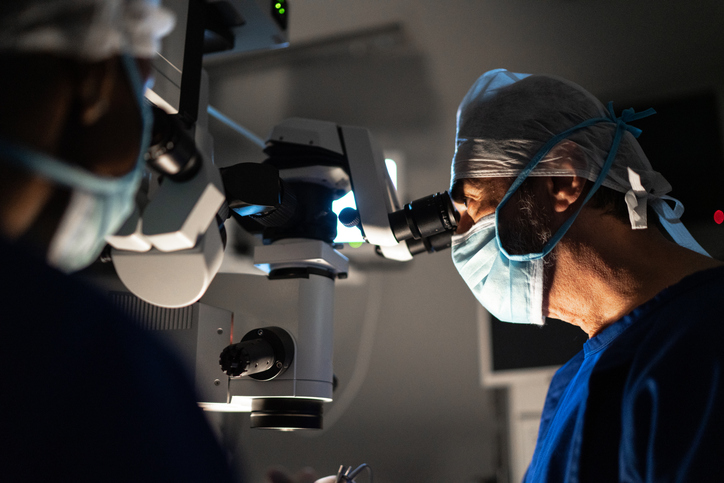Cataract surgery is one of the most common and successful procedures in modern medicine. It offers a solution to those suffering from cataracts, a condition where the lens of the eye becomes cloudy, affecting vision. You can learn more about cataract surgery with an online search.

What Are Cataracts?
Cataracts develop when proteins in the eye’s natural lens break down and clump together, creating cloudiness that impairs vision. This process usually occurs gradually over time and can be related to aging, but factors like diabetes, smoking, or excessive exposure to sunlight can increase the risk. Cataracts are one of the leading causes of vision impairment, especially in older adults. Common symptoms include blurred vision, sensitivity to light, difficulty seeing at night, and fading colors.
While eyeglasses or stronger lighting may help in the early stages, surgery is the only definitive way to treat cataracts.
When is Cataract Surgery Recommended?
Cataract surgery is typically recommended when the condition begins to interfere with daily activities like driving, reading, or recognizing faces. Eye doctors assess the severity of the cataract and consider the patient’s overall health and lifestyle before suggesting surgery. In most cases, waiting to have cataracts removed does not pose additional risks to eye health, so patients and their doctors can decide when the time is right.
In more severe cases, cataracts can lead to vision loss, and surgery becomes essential to restore vision and prevent further complications.
The Cataract Surgery Procedure
Cataract surgery is an outpatient procedure, meaning patients can go home the same day. The surgery itself usually takes less than 30 minutes.
During the procedure, the surgeon removes the cloudy lens and replaces it with an artificial intraocular lens (IOL). The most common method used today is called phacoemulsification, where a small incision is made in the cornea, and an ultrasound device breaks the cataract into small pieces, which are then suctioned out. The IOL is folded and inserted into the same incision, unfolding in place to restore clear vision.
There are different types of IOLs available, including monofocal, multifocal, and toric lenses. Monofocal lenses provide clear vision at one distance (near or far), while multifocal lenses allow for both near and distance vision, reducing the need for glasses. Toric lenses are designed to correct astigmatism.
Benefits of Cataract Surgery
Cataract surgery has a high success rate, with more than 90% of patients experiencing significantly improved vision. The primary benefit is the restoration of clear vision, which improves the quality of life. After surgery, many patients notice that colors appear brighter and their overall clarity of sight is much sharper.
Additionally, cataract surgery can also address other vision problems. For example, the use of specialized lenses can reduce or eliminate dependence on glasses or contact lenses. Cataract surgery may also help reduce the risk of other eye conditions, such as glaucoma, which can be associated with cataracts.
Risks and Complications
Although cataract surgery is generally safe, like any surgery, it carries some risks. The most common complications include infection, bleeding, or inflammation. However, these issues are typically mild and can be treated effectively with medications.
In rare cases, more serious complications like retinal detachment, loss of vision, or the dislocation of the IOL may occur. Some patients may experience posterior capsule opacification (PCO), where the back of the lens capsule becomes cloudy after surgery, mimicking the original cataract. Fortunately, PCO can be easily treated with a painless laser procedure called a YAG laser capsulotomy.
It’s important to discuss any concerns with your surgeon to understand the risks and benefits specific to your condition.
The Recovery Process
Recovery from cataract surgery is usually quick, with many patients experiencing improved vision within a few days. After the surgery, patients are provided with protective eyewear and prescribed eye drops to prevent infection and reduce inflammation.
It’s essential to avoid strenuous activities, heavy lifting, or rubbing the eyes during the initial recovery period. Most patients can resume normal activities within a week, but complete healing may take up to a month.
Follow-up appointments with the doctor are crucial to monitor healing and ensure there are no complications. In some cases, patients may need to wear glasses for reading or fine-detail work, especially if they opted for monofocal lenses.
Who is a Good Candidate for Cataract Surgery?
Almost anyone with cataracts that affect their vision can be a candidate for surgery, but certain factors should be considered. Patients with other eye conditions, such as glaucoma or macular degeneration, may need special evaluations to determine the best approach. General health, such as the presence of diabetes, also plays a role in surgical planning.
If you are experiencing vision problems and suspect cataracts, a comprehensive eye exam by an ophthalmologist can help determine if surgery is the best option for you.
Conclusion
Cataract surgery is a highly effective and safe procedure that can restore clear vision and significantly improve quality of life. With advances in technology, the procedure has become quicker, safer, and more customized to the needs of each patient. If cataracts are impacting your vision, consult with an eye specialist to explore whether surgery is the right choice for you.




